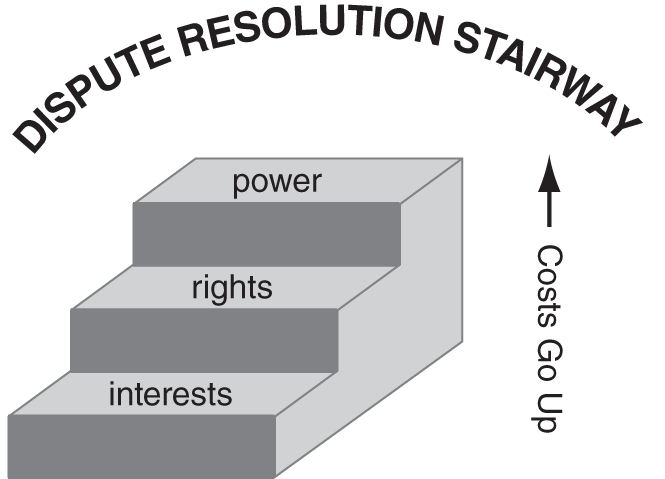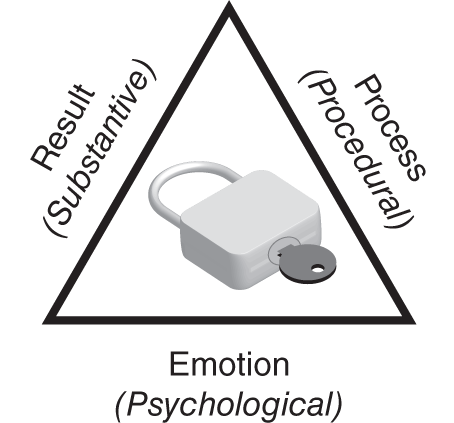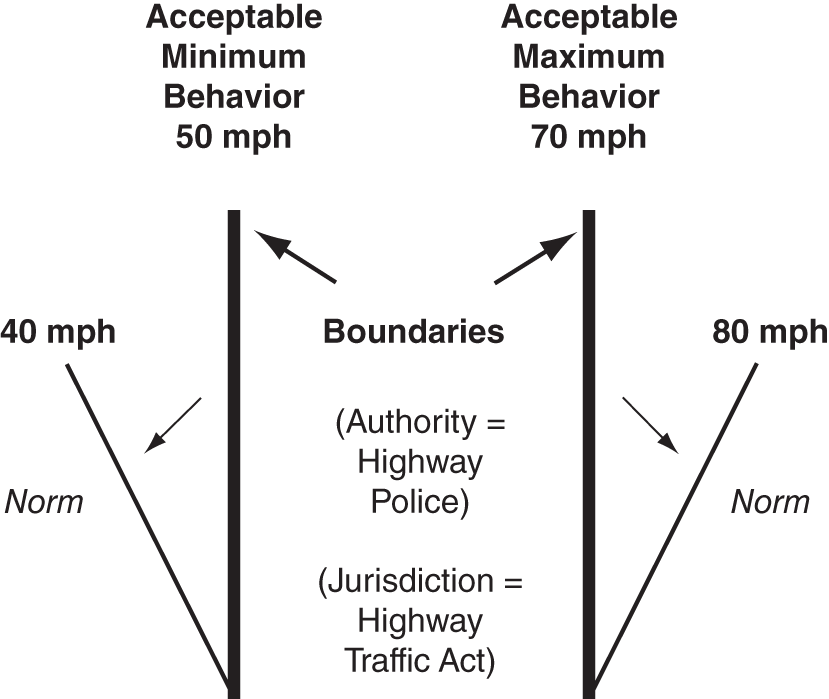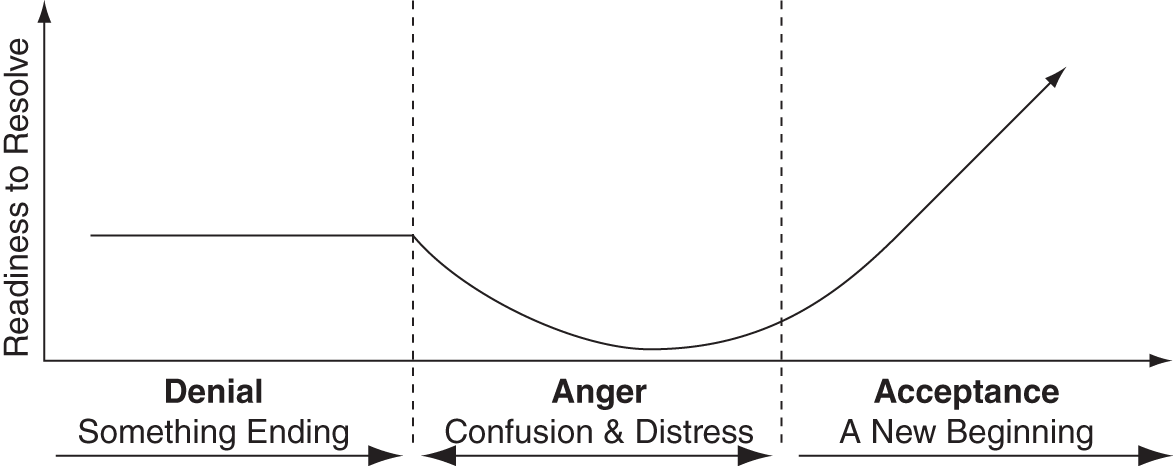CHAPTER TWO
OVERVIEW OF THE MODELS
The Toolbox profiles the following nine conflict analysis models, nine different lenses or perspectives through which the practitioner can assess situations of conflict.
WHY THESE NINE MODELS?
There are many approaches to conflict, many ways to understand difficult situations, and many possible maps or models that can help practitioners diagnose and intervene in conflict. So why these nine? These models were chosen for a variety of reasons. First, as models, they are well balanced between simplicity and complexity. The Dynamics of Trust model presents a great deal of the complexity that attribution theory brings to the table, yet does so in a functional and useful way. The Triangle of Satisfaction expands and refines the foundational idea of interests in a way that can be applied in real-time conflict situations.
Second, they were chosen for their clarity in giving direction and guidance for intervention. Each model offers the practitioner clear, focused ideas on what will help in a given conflict, and why.
Finally, these models represent a wide range of unique ways to approach and address conflict. Each model provides a different and potentially useful angle on the problem. This range of models is not complete and is not meant to be. Rather, the Toolbox is intended as a foundation, a good beginning toward providing practitioners with roadmaps, “conflict maps,” that can assist them as they grow and develop.
The following is an overview of all nine models.
MODEL #1—THE STAIRWAY (INTERESTS/RIGHTS/POWER) MODEL
The Stairway model (Figure 2.1) is foundational to the field of negotiation and conflict resolution. It helps practitioners by categorizing the various processes we use to solve problems and manage conflict into three distinct types—interest-based, rights-based, or power-based. The Stairway model explains the characteristics of each of the three types, along with the benefits and consequences of each. Finally, it offers direction on working with each of the three different processes, along with a guide for choosing effective types of processes for resolving any situation of conflict.

Figure 2.1 The Stairway model
MODEL #2—THE TRIANGLE OF SATISFACTION1
The Triangle model (Figure 2.2) is an expansion of the interests stair on the Stairway, though it also functions as a stand-alone tool. This model deepens the area of interests, suggesting that there are three distinct types of interests: result or substantive interests, process or procedural interests, and psychological or emotional interests. The model offers specific strategies for working with the three different types of interests in conflict situations.

Figure 2.2 The Triangle model
MODEL #3—THE CIRCLE OF CONFLICT2
The Circle of Conflict (Figure 2.3) is a model that diagnoses and categorizes the underlying causes or “drivers” of a given conflict. It classifies these causes and drivers into one of five categories: values, relationships, moods/externals, data, and structure. Further, the model offers concrete suggestions for working with each of these drivers. When focusing on resolution, the Circle directs the practitioner toward the data and structure categories, as well as a sixth category, interests.

Figure 2.3 The Circle of Conflict model
MODEL #4—THE DYNAMICS OF TRUST
The Trust model (Figure 2.4) looks at the dynamics of how trust is built and strengthened and how we attribute blame. Attribution theory, one of the most important areas of psychological research, is boiled down to help practitioners understand how trust is broken and how blame and lack of trust can make resolution difficult, if not impossible. The model also gives the practitioner specific strategies for rebuilding enough trust to facilitate the resolution process through activities such as procedural trust, confidence-building measures (CBMs), and attributional retraining.

Figure 2.4 The Dynamics of Trust model
MODEL #5—THE LAW OF RECIPROCITY
The Law of Reciprocity (Figure 2.5) describes a “natural law” of human interaction that predicts and unconsciously directs our behavior in many situations. Understanding clearly how the Law of Reciprocity influences decision-making can help practitioners diagnose specific behaviors, both constructive and destructive. The reciprocity model gives clear strategies on how to help parties break negative cycles and rebuild damaged relationships.

Figure 2.5 The Law of Reciprocity model
MODEL #6—THE LOSS AVERSION BIAS
Loss aversion is a powerful cognitive bias that unconsciously shapes behavior. It can cause parties to take what appear to be irrational risks in some circumstances and to settle for far less value far too easily in others. The Loss Aversion Bias (Figure 2.6) is a model that offers strategies for helping parties avoid the significant pitfalls that our desire to avoid losses at all costs can create.

Figure 2.6 The Loss Aversion Bias model
MODEL #7—THE BOUNDARY MODEL3
The Boundary model (Figure 2.7), similar to the Circle, assesses the root cause of conflict from a structural and behavioral point of view but suggests that conflict occurs because of how people relate to, and interact with, boundaries.

Figure 2.7 The Boundary model
Our lives are filled with boundaries of many kinds including laws, contracts, cultural expectations, norms, and limits of any sort. The model suggests that conflict occurs when parties disagree on boundaries, expand or break boundaries, or refuse to accept the authority and jurisdiction inherent in a boundary. It also offers specific approaches to work with conflict caused by boundary issues.
MODEL #8—THE SOCIAL STYLES MODEL4
The Social Styles model (Figure 2.8) takes a different angle on conflict than the other models in the Toolbox in that it focuses on understanding personality conflict and conflict related to personal communication styles. Based on the same type of research from which the Myers-Briggs Personality Indicator was developed, the Social Styles model offers a much simpler framework for assessing personal styles. The Social Styles model suggests four basic personality and communication styles, or types, and offers clear skills and strategies for working with these personality characteristics in conflict situations.

Figure 2.8 The Social Styles model
MODEL #9—MOVING BEYOND CONFLICT
One of the main barriers to resolution comes when people can't let a conflict go and move on with their lives. A dispute can become such an important part of an individual's life that he or she will not allow it to end. It feels as if something important is being lost, and parties can engage in a process very similar to grieving. The Moving Beyond model (Figure 2.9) helps identify the stages or steps parties often must go through in order to let a conflict go and move beyond it.

Figure 2.9 The Moving Beyond model
